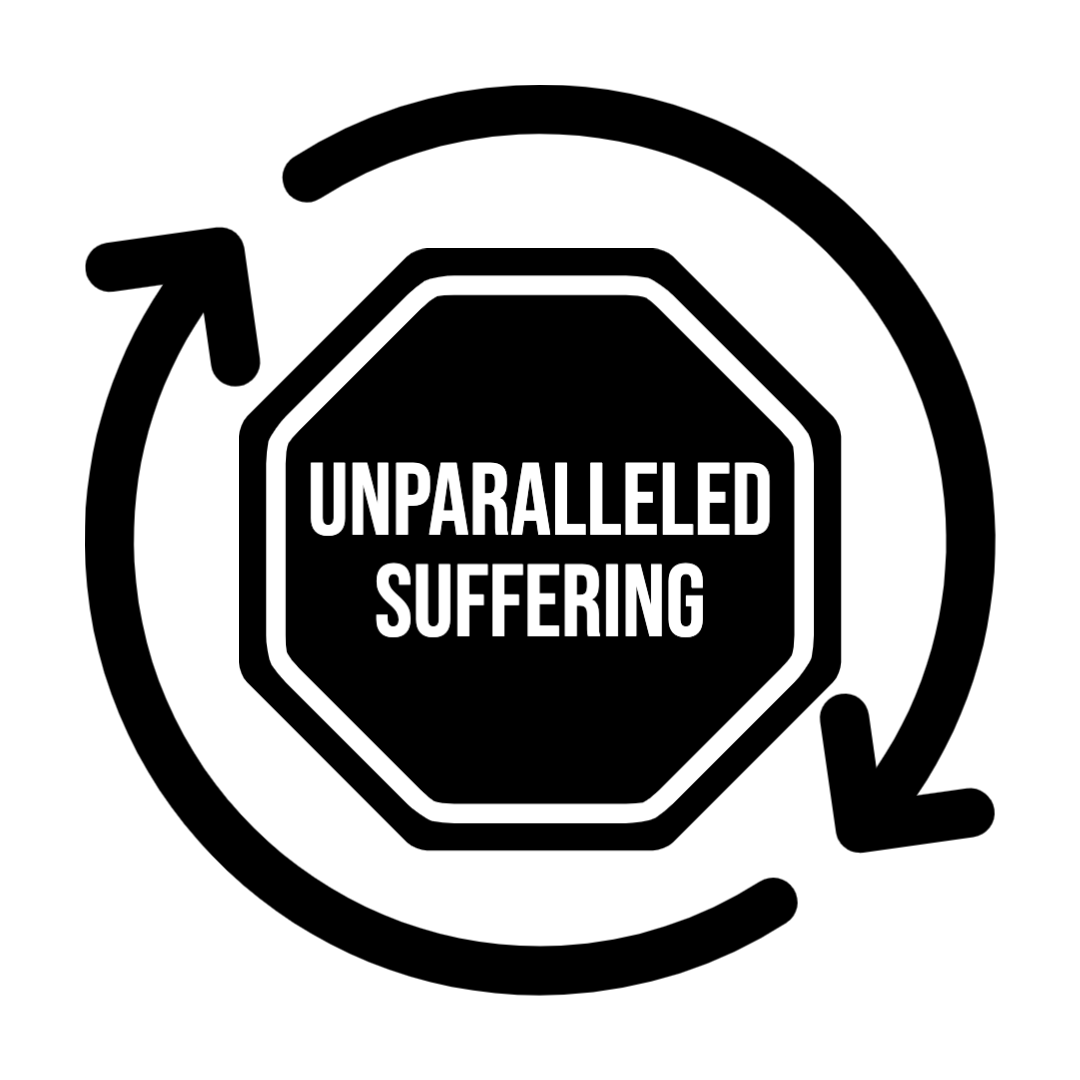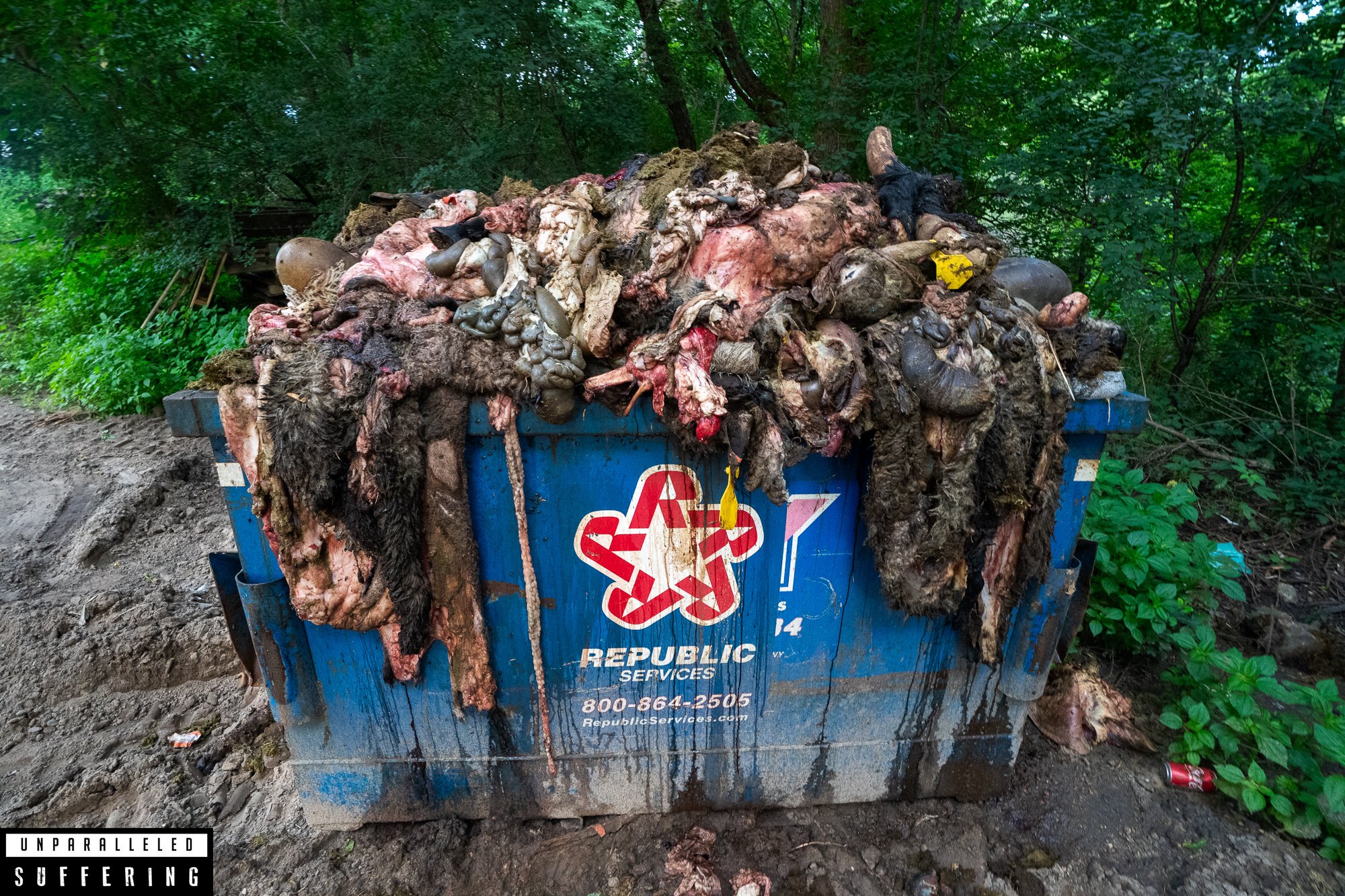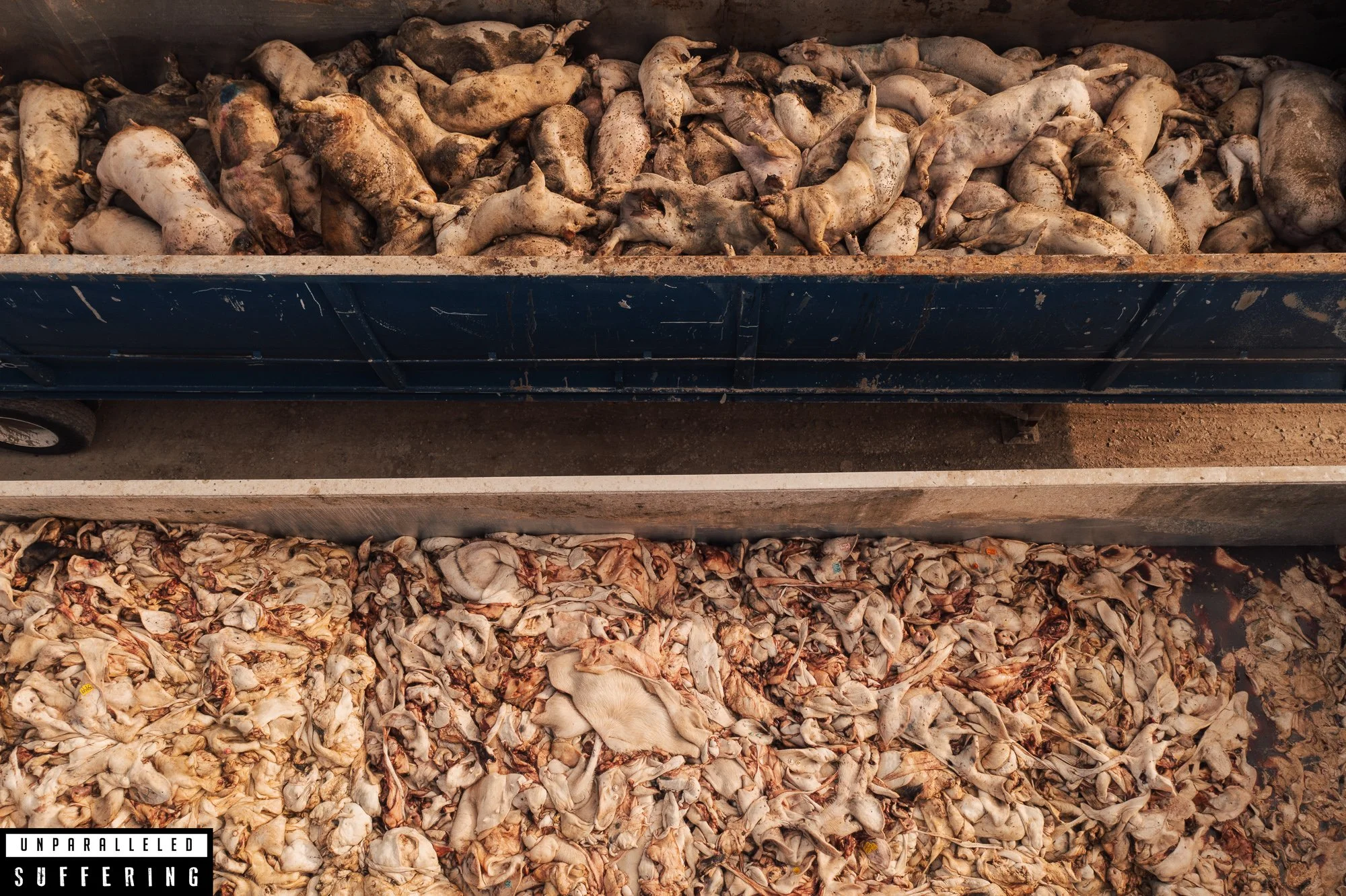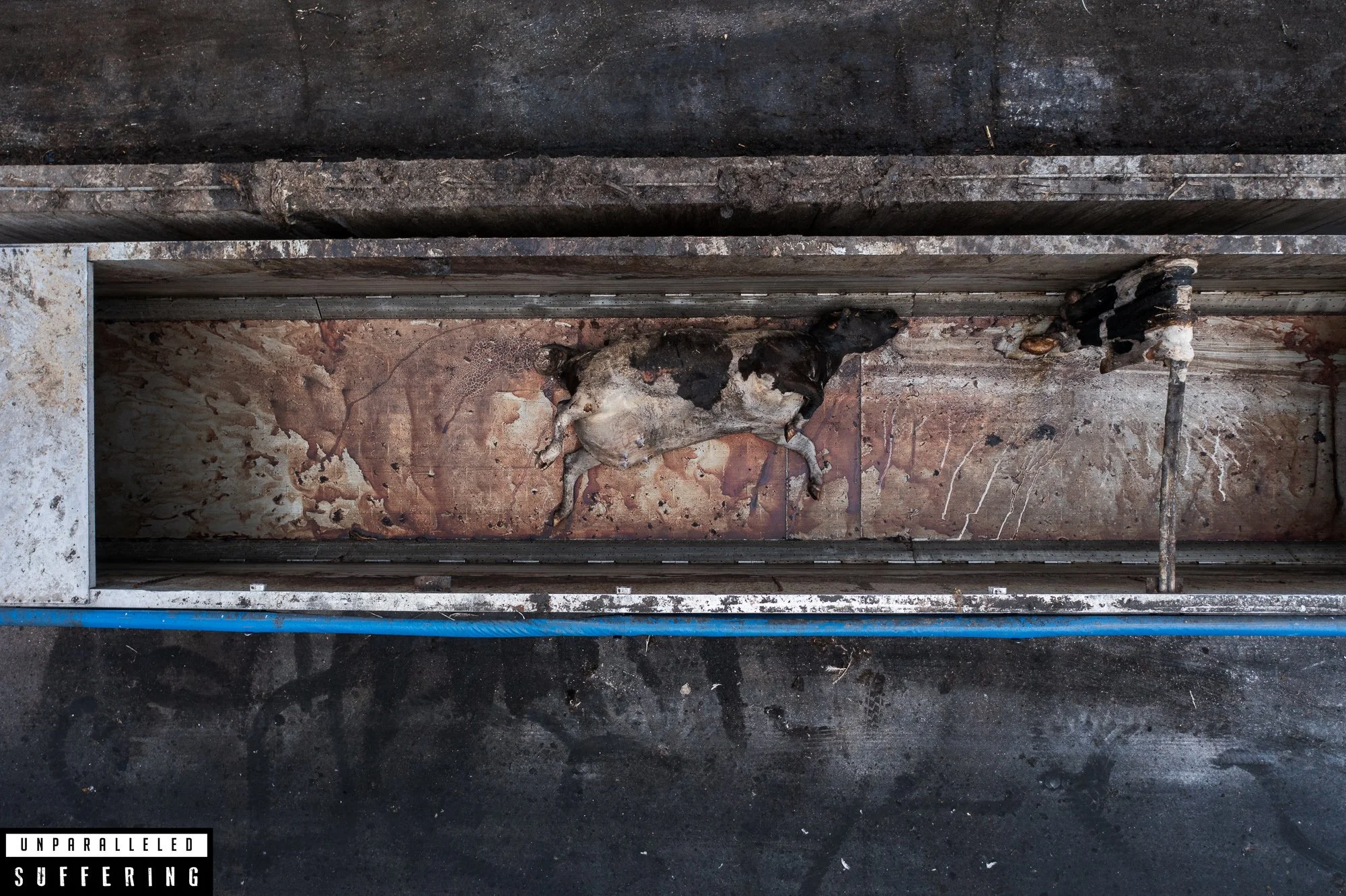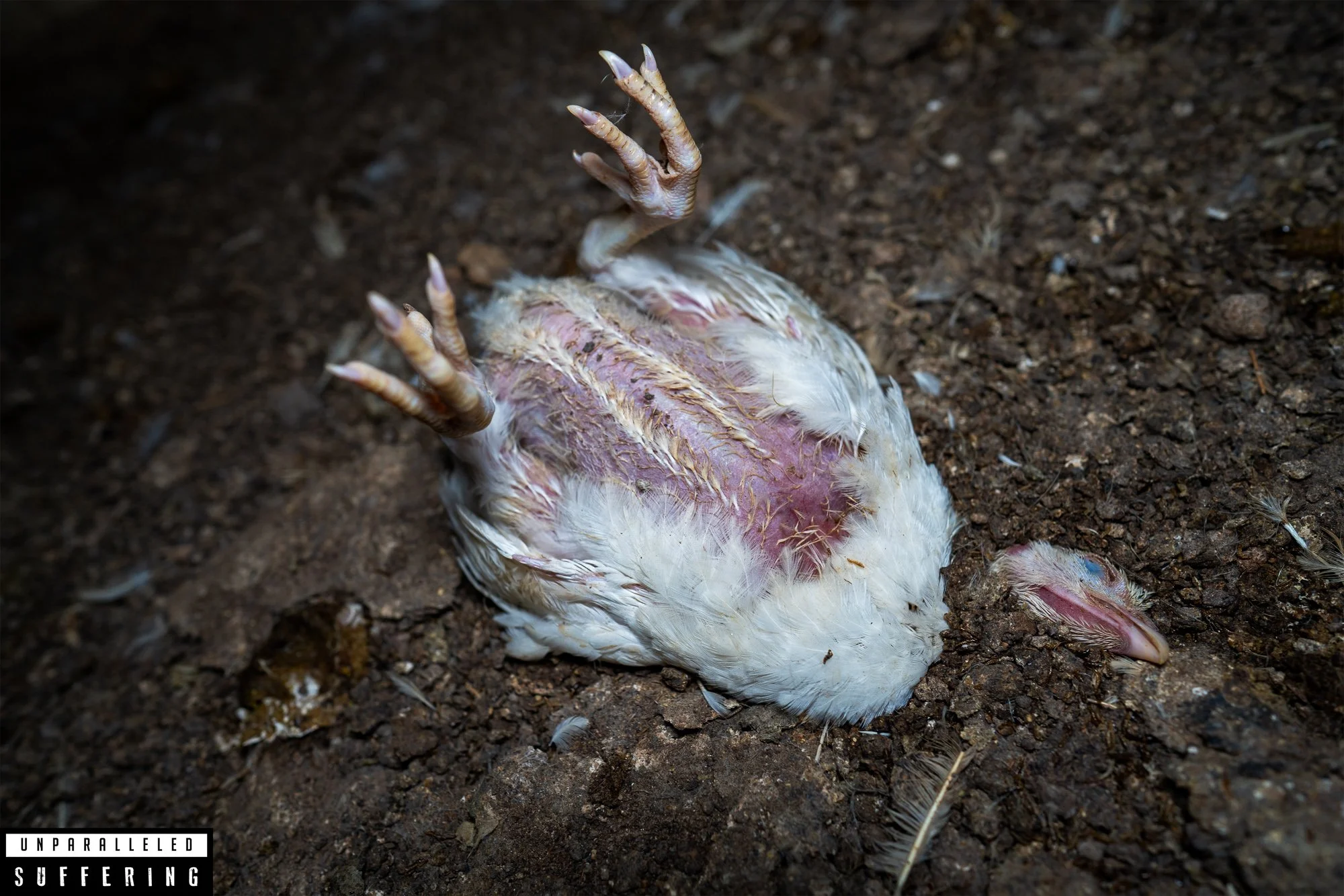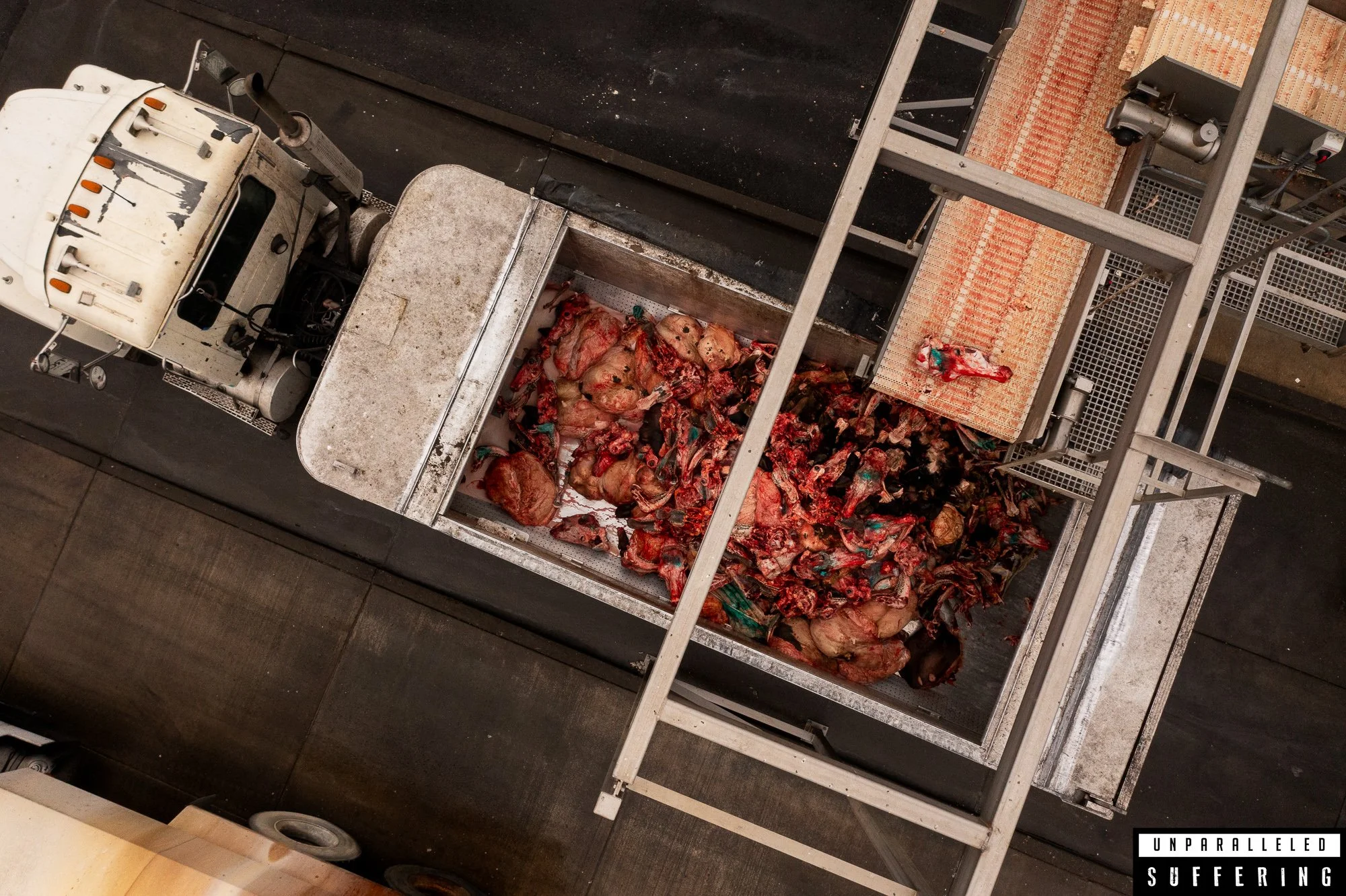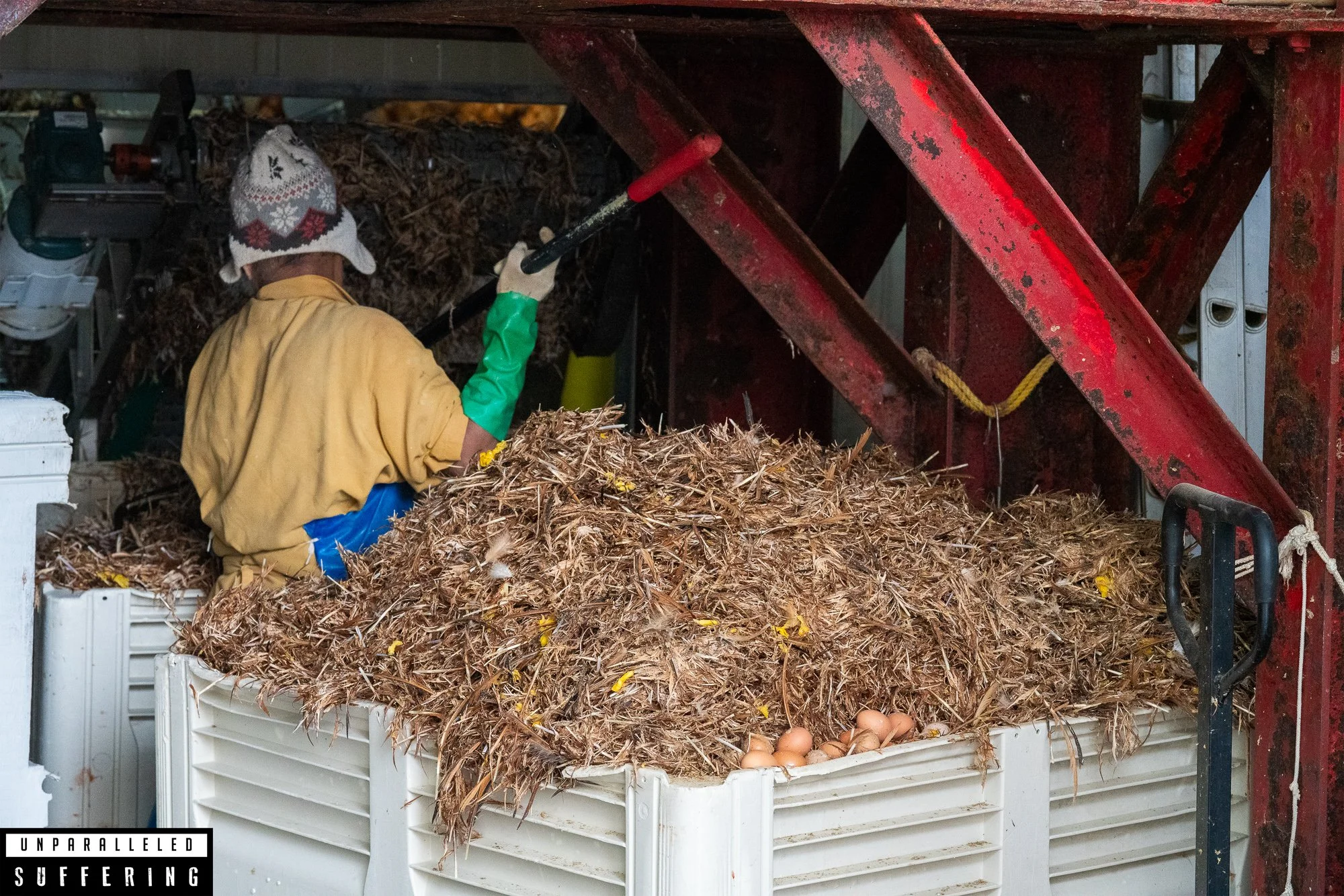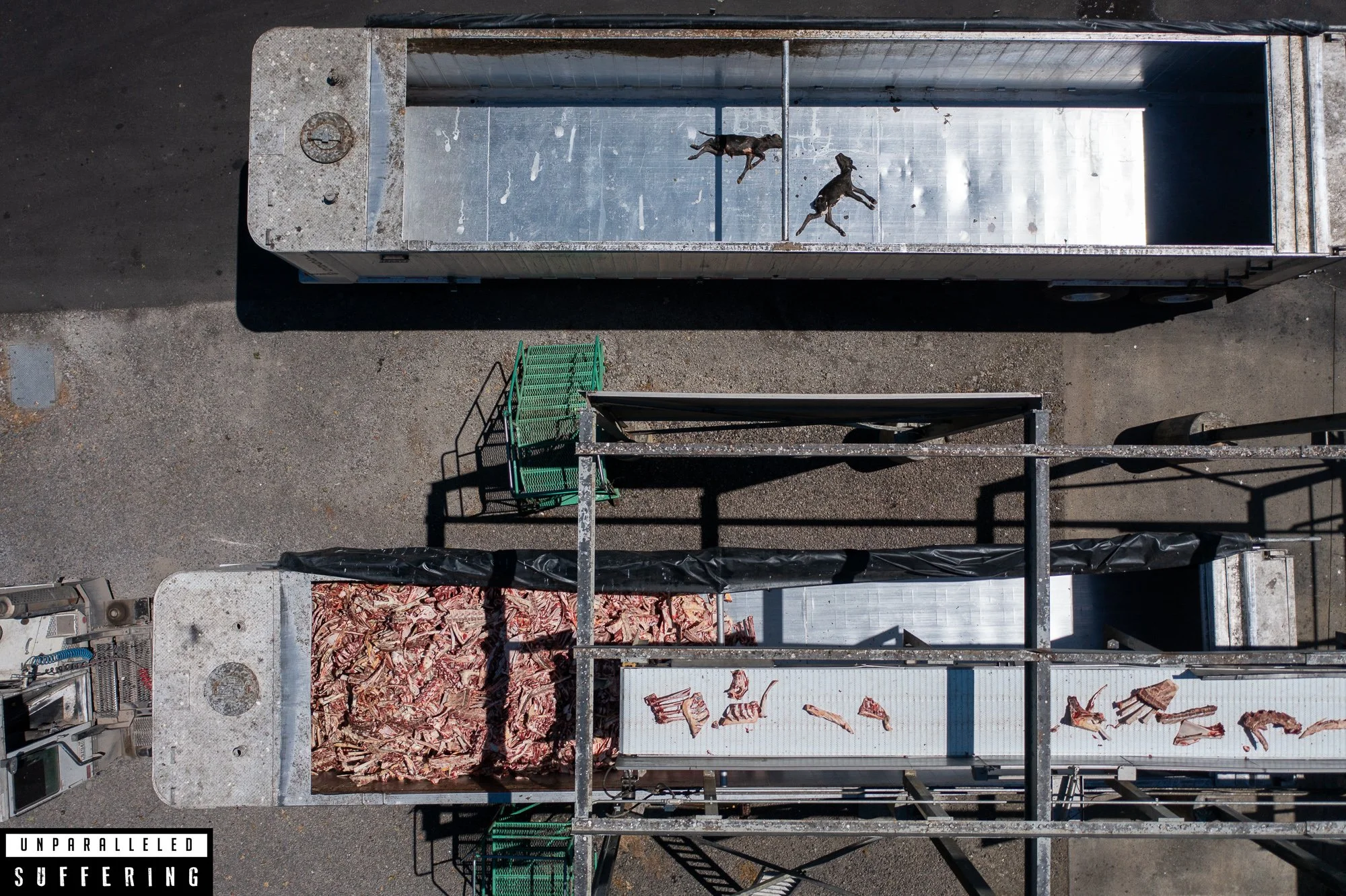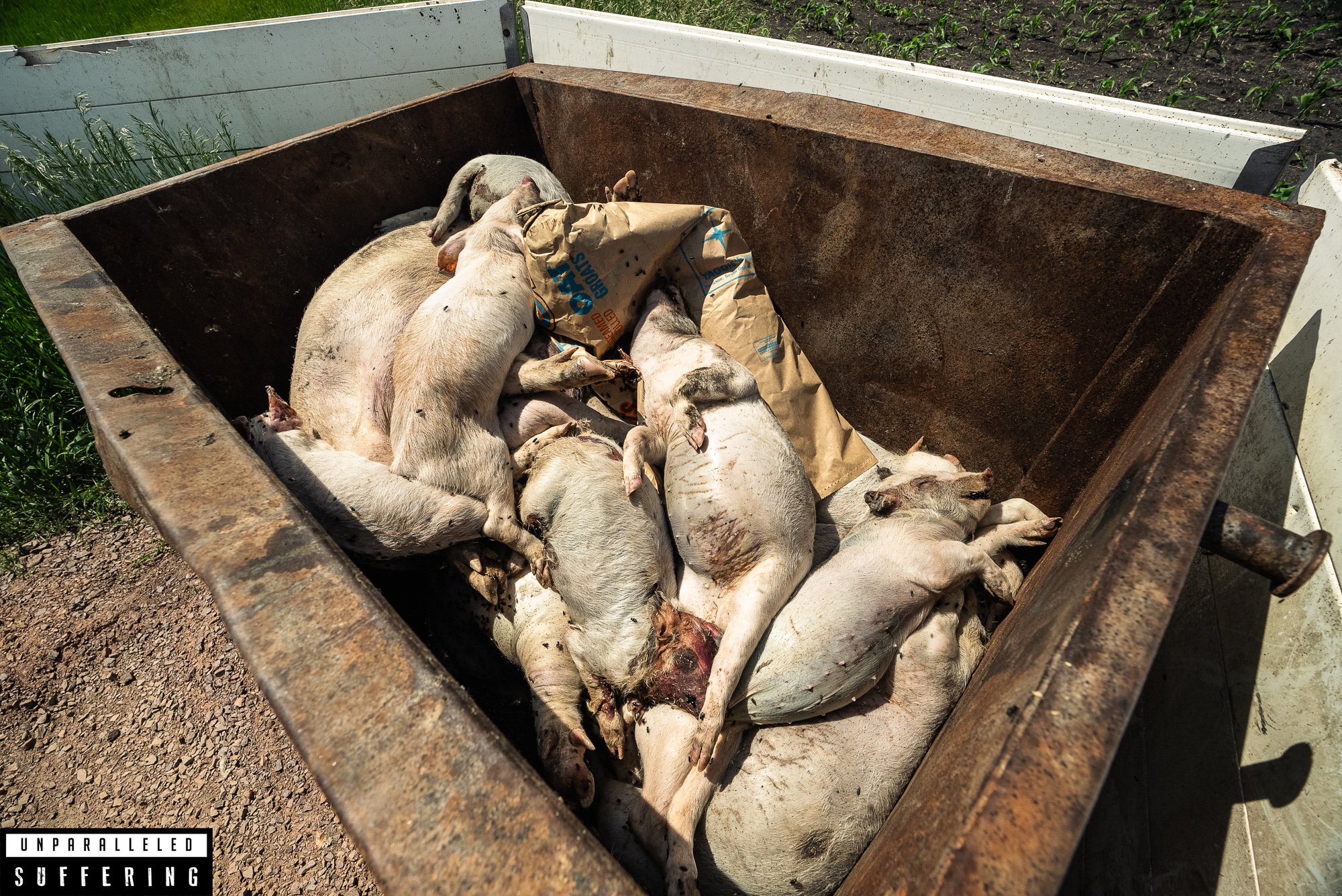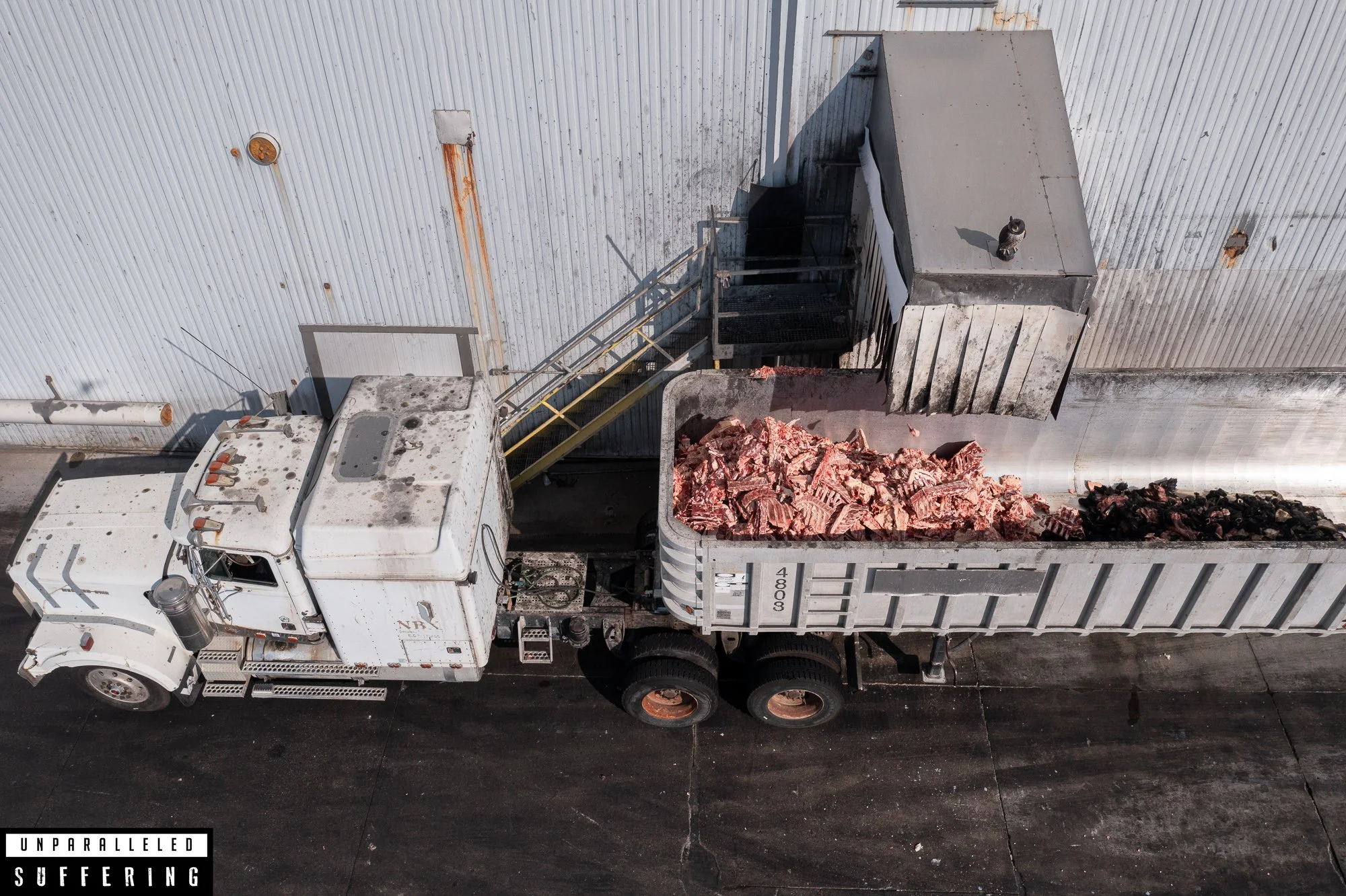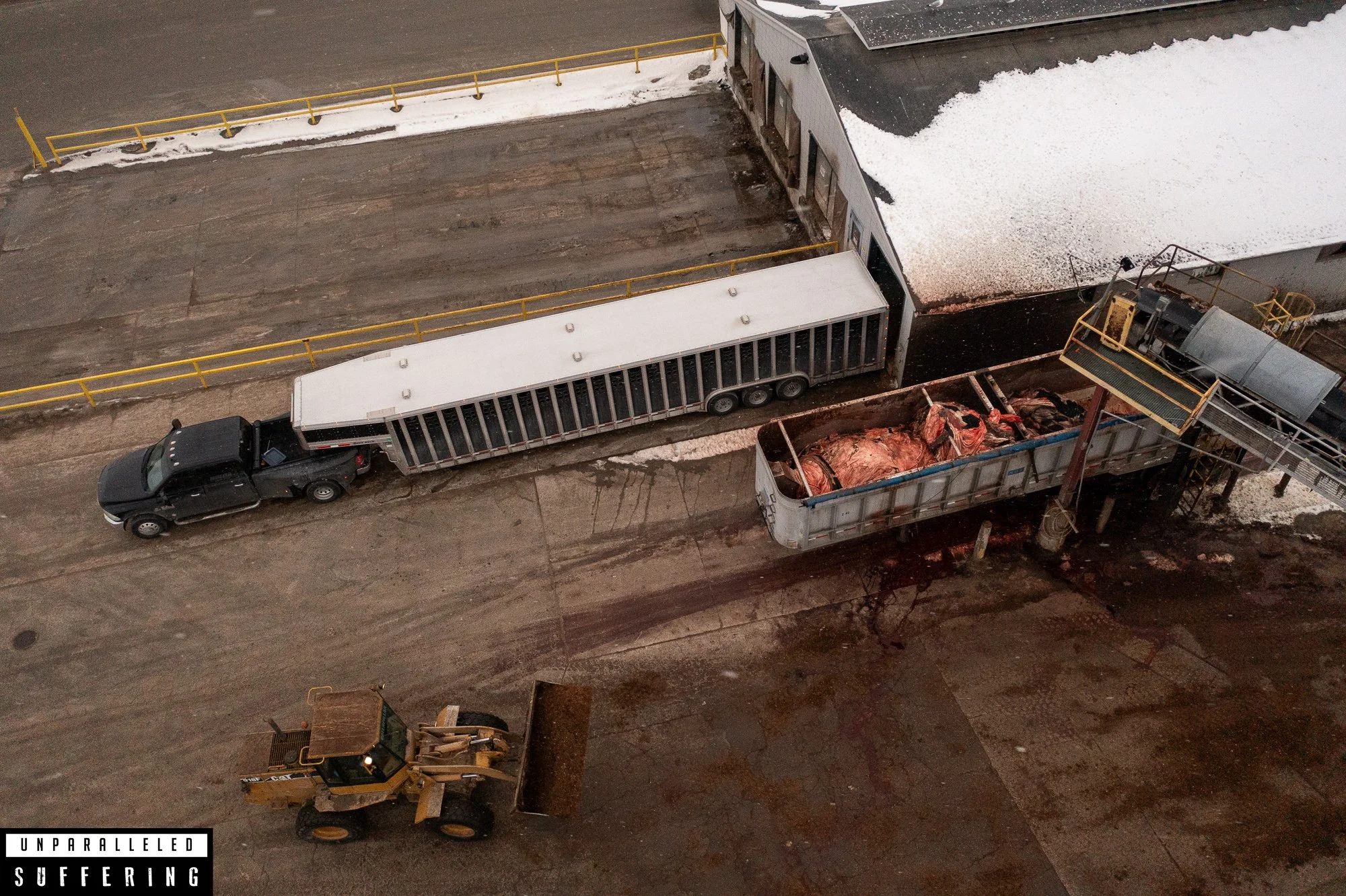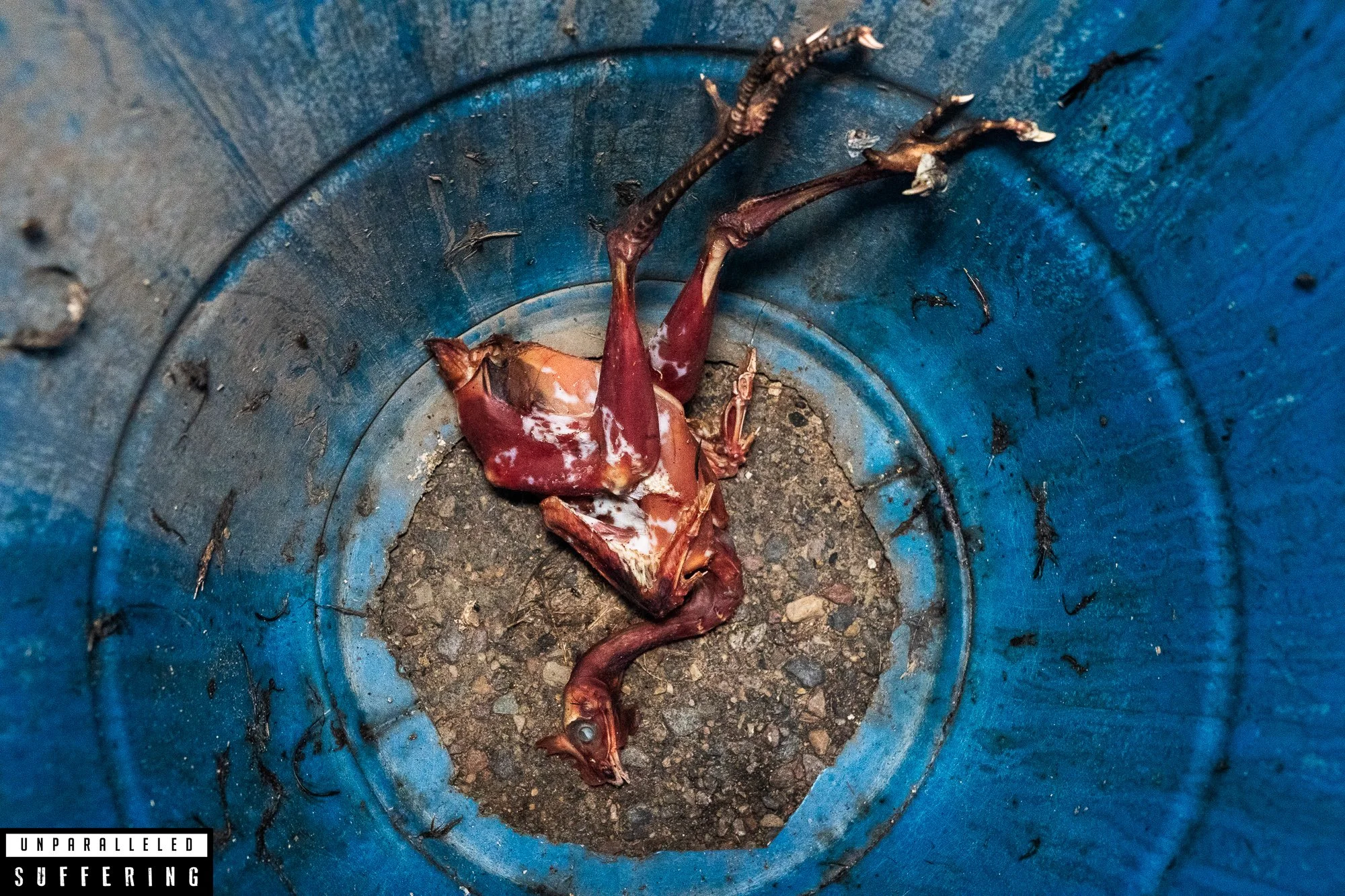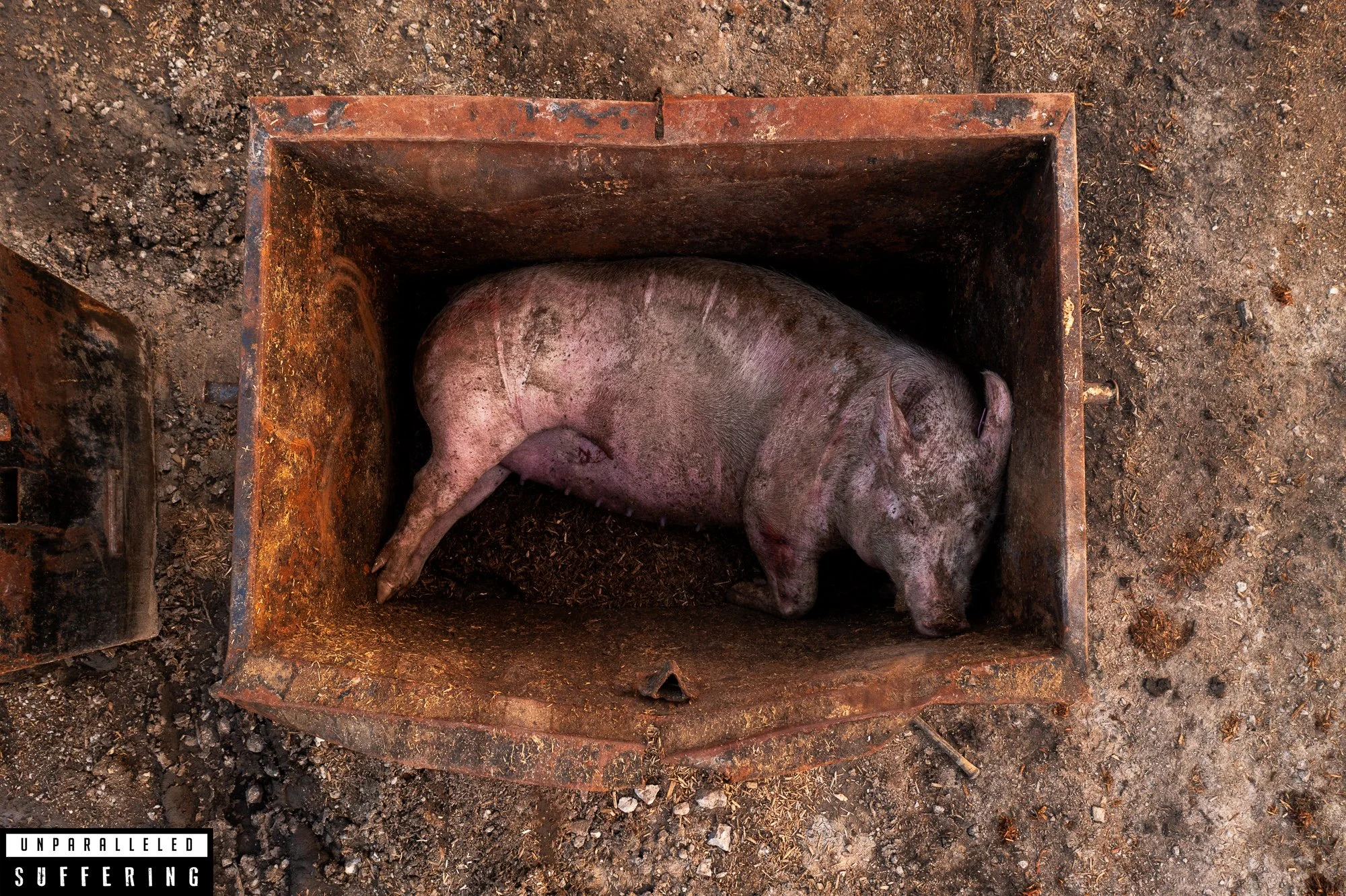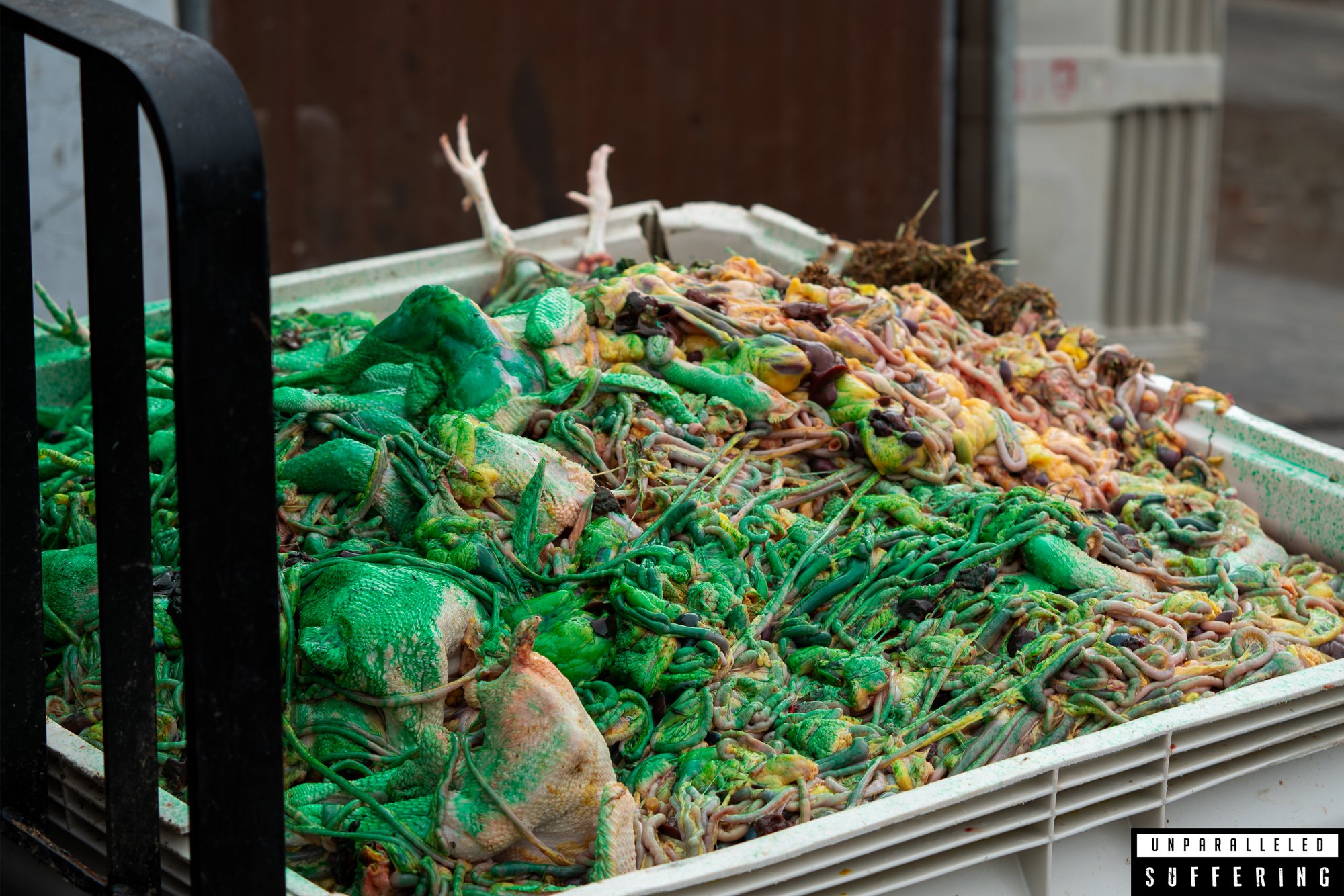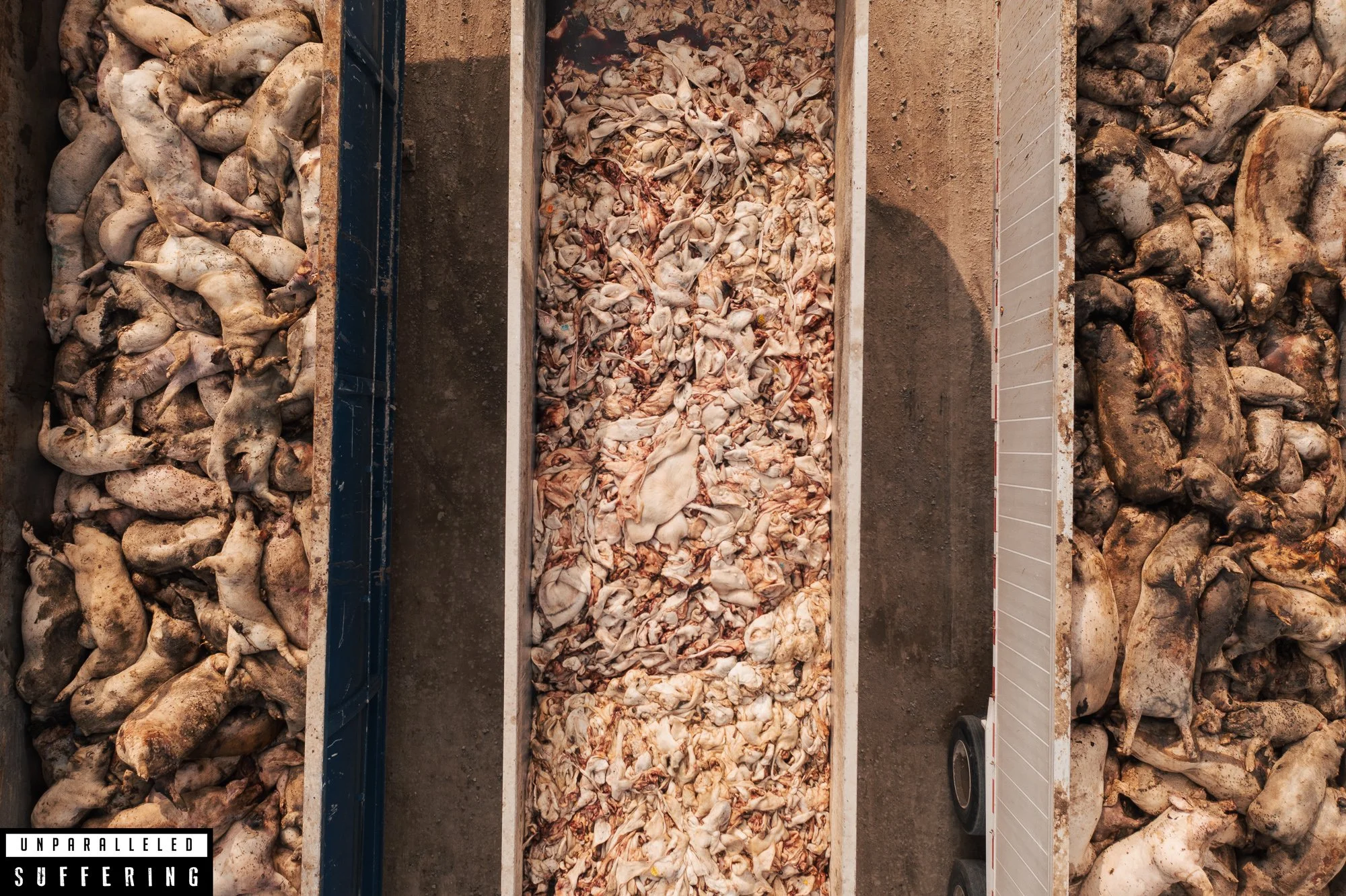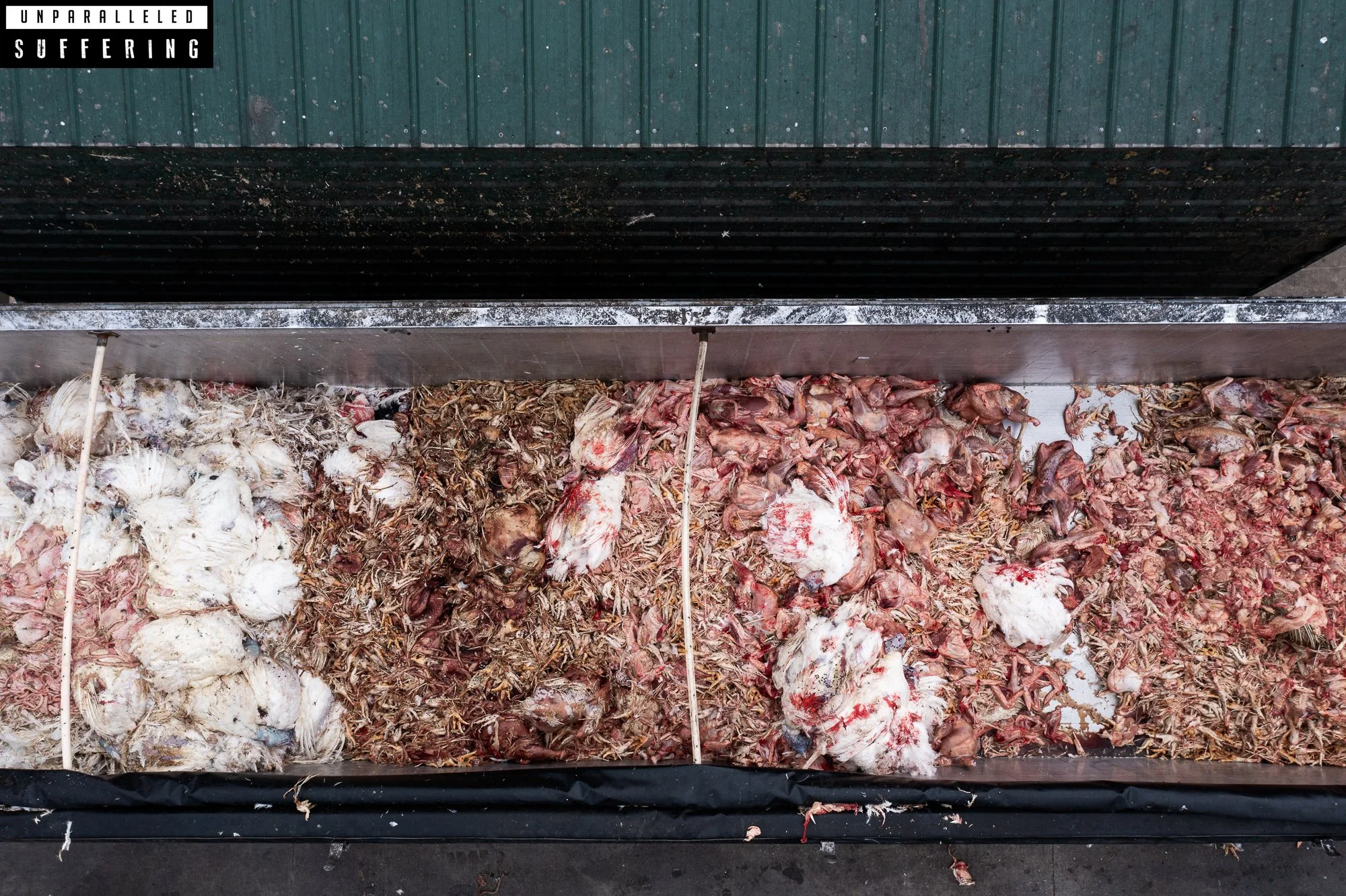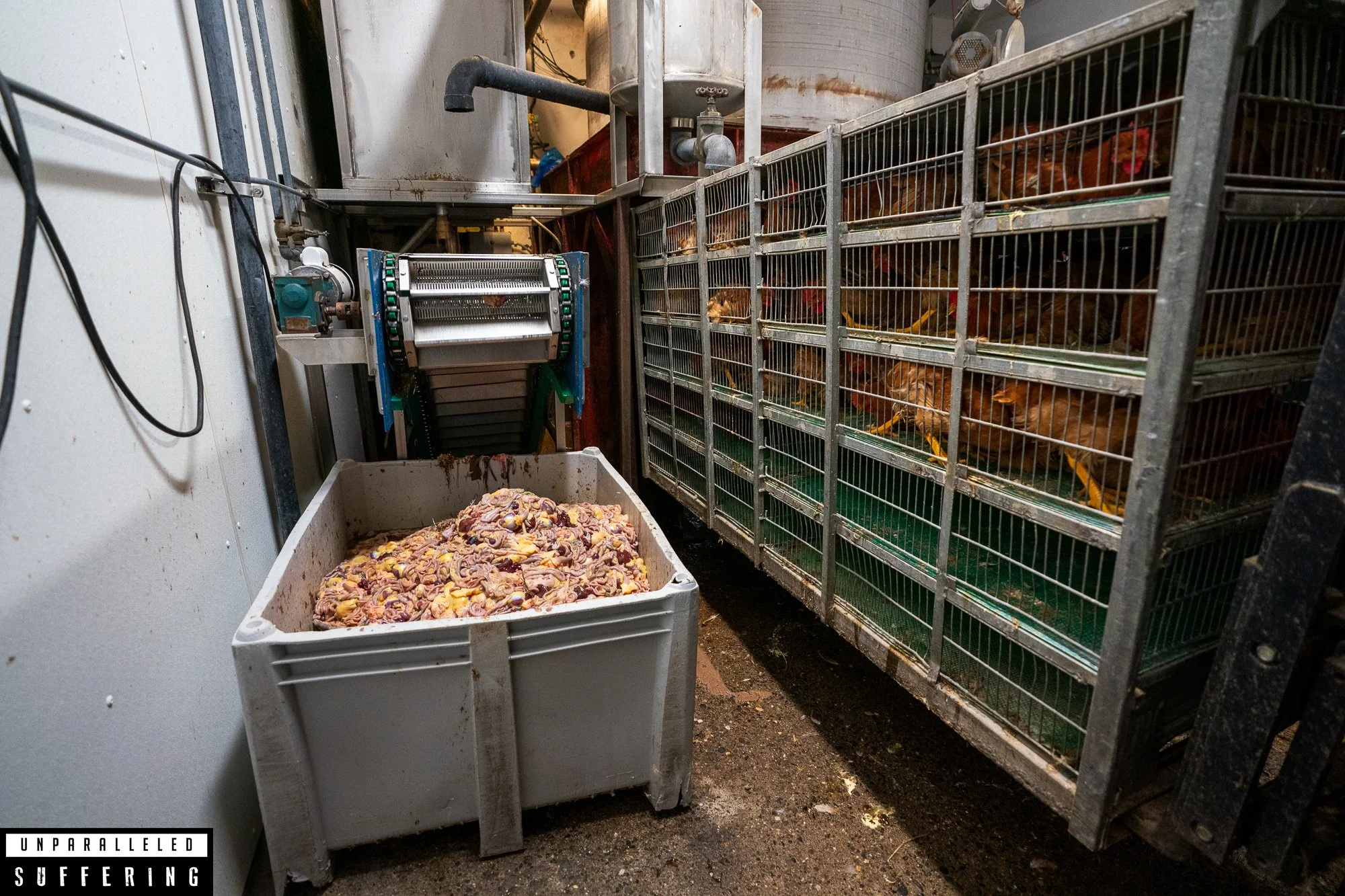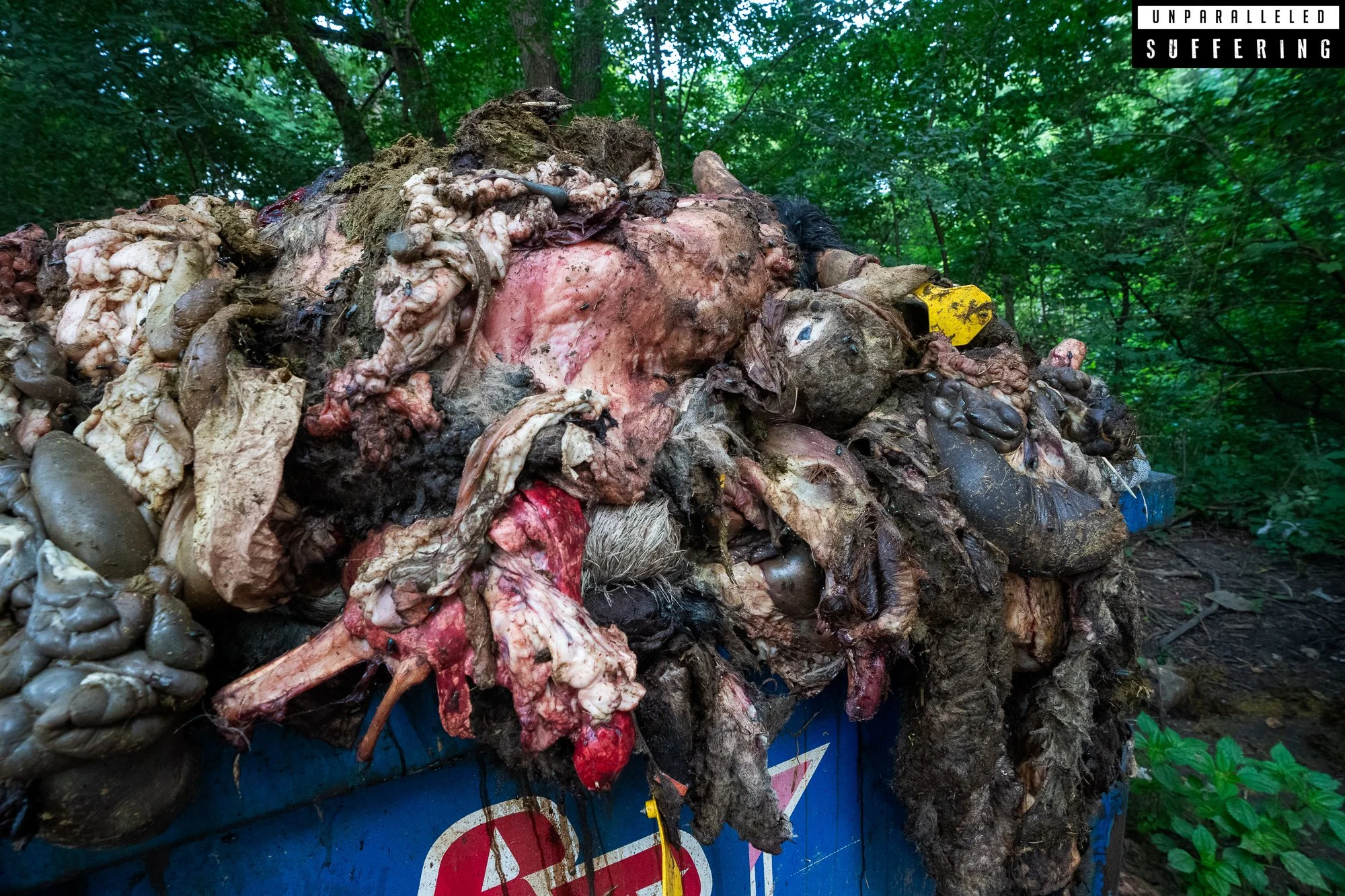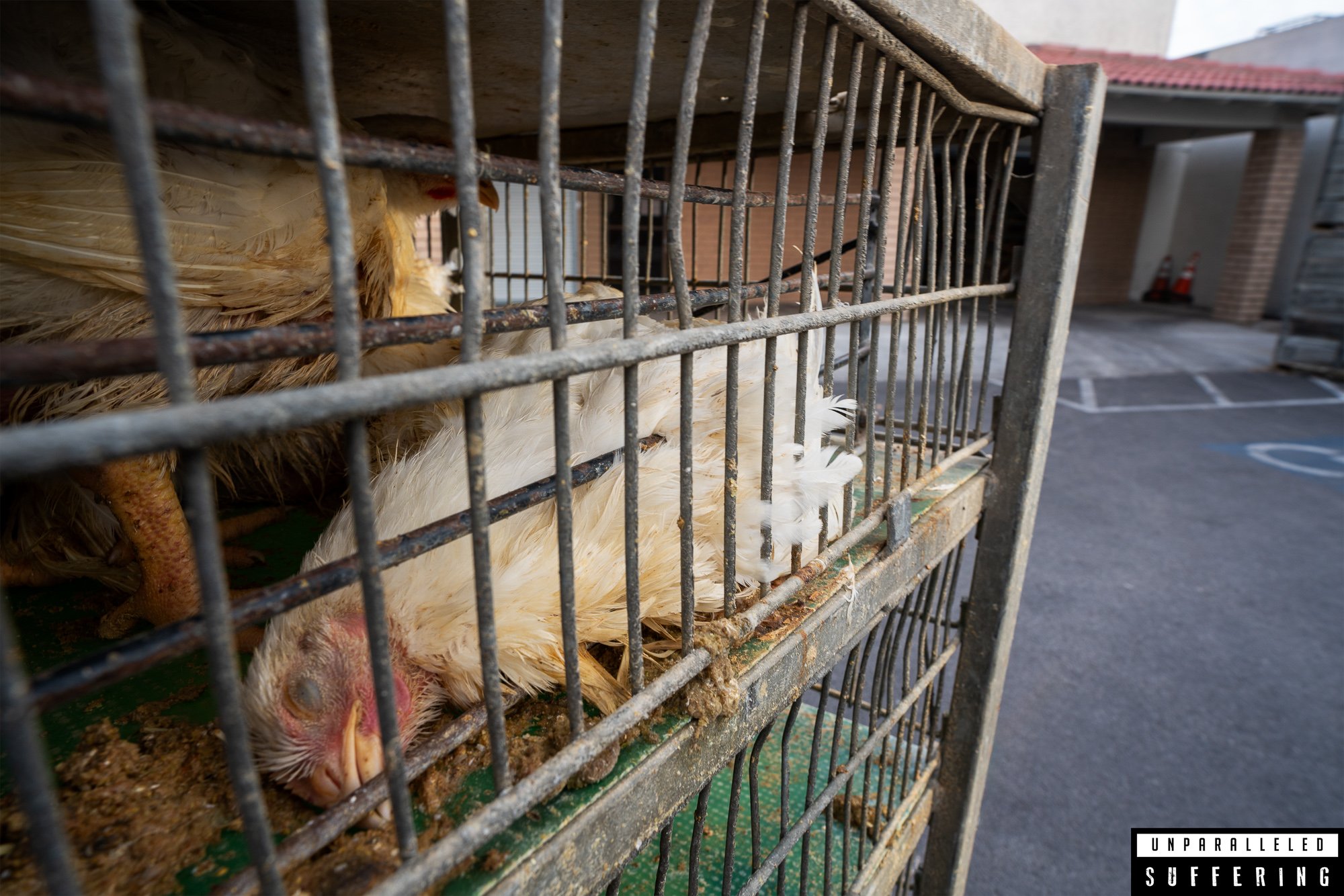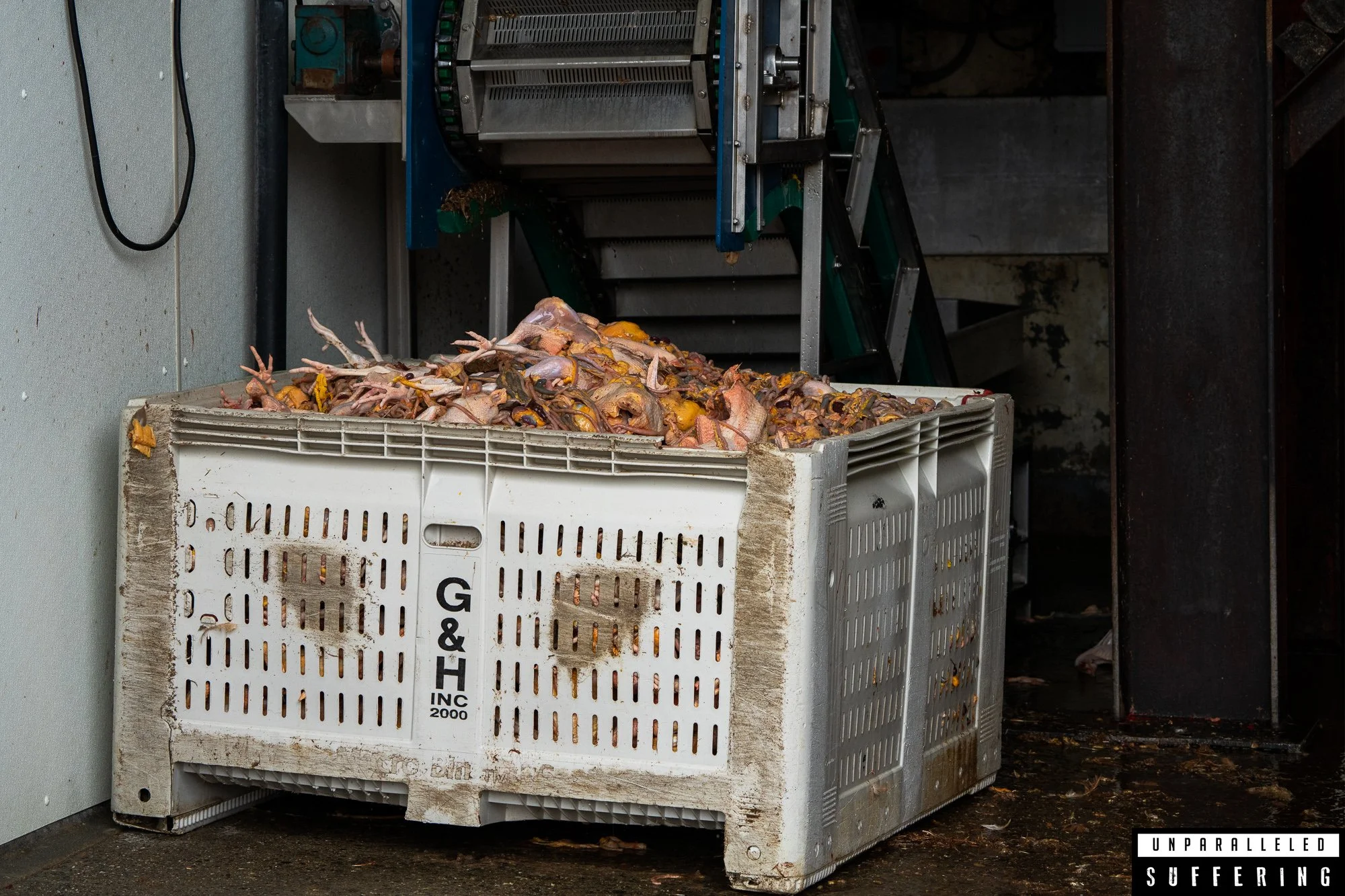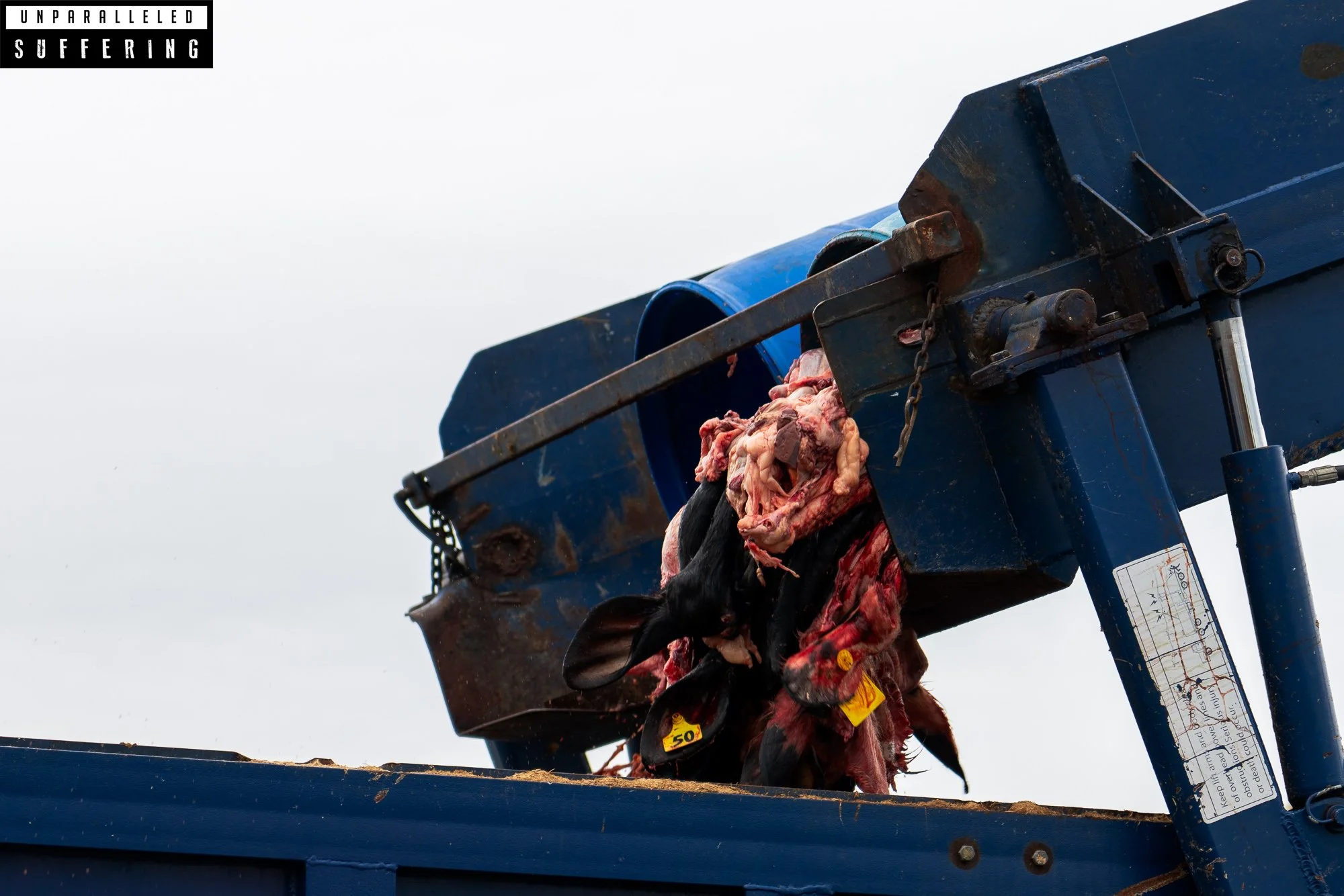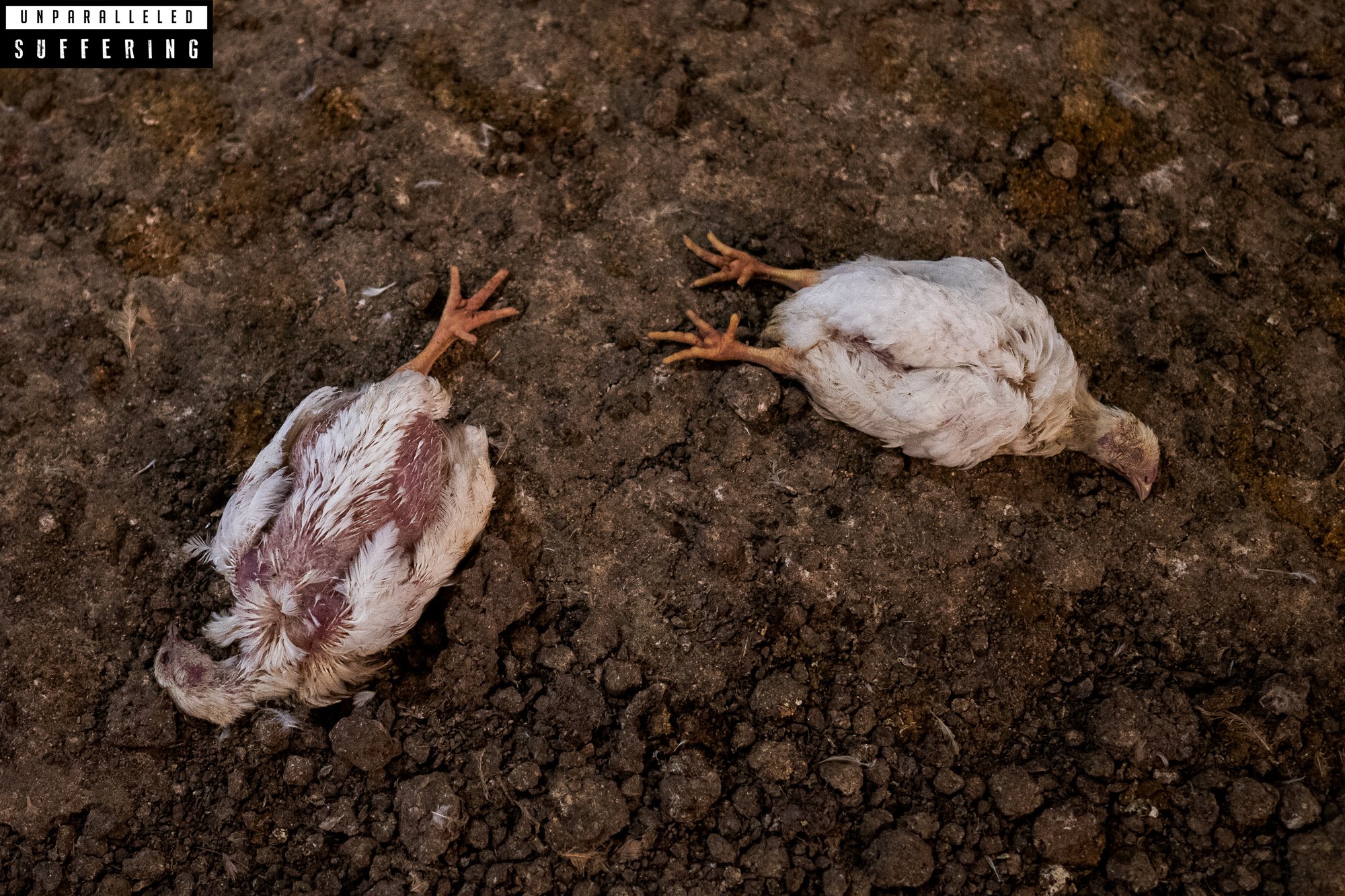Rendering
Converting Animal waste Into Animal Feed
What is Rendering?
Rendering animals is a process whereby whole carcasses, or even more often parts of dead animals, go through a process where they are converted from their original decaying state into something completely different that's no longer for human consumption. A third to half of animals used by humans for food or for fiber are not consumed by humans and when an animal dies before reaching a slaughterhouse or dies in a way that makes their flesh unsalable for human consumption (e.g. chickens who are boiled to death) then the whole bodies can be utilized for rendering. All types of body parts, including blood and feathers and horns, get converted to feed ingredients for farmed animals (including for the same [non-cannibalistic] species as the rendered parts and for animals who are natural herbivores), companion animals, laboratory animals, and farmed fishes.
According to a report on the rendering industry from 2006, there are approximately 300 rendering facilities in the United States. Over half the volume of all commodities produced by animal agriculture come from rendering facilities. Around 55 billion pounds of animal waste is processed for rendering annually in the United States.
So-called by-products that are shipped to and processed at rendering facilities include skins, hair, feathers, hides, horns, feet, bones, toe nails, blood, organs, glands, intestines, muscle and fat tissue, shells, and entire carcasses. The animals who are used for rendering come from the slaughterhouses, animal farms and feedlots, livestock auctions, unusable grocery store and butcher shop and restaurant flesh, the fishing industry, laboratories, veterinary clinics, animal shelters, and roadkill.
Rendering uses a system that consists of a bunch of different equipment and processes, via physical and chemical transformations, that all involve using intense levels of heat, extraction of moisture, and separation of fat. Used cooking oil from restaurants is also a major component of rendering and this will be processed and mixed with some of the animal parts during the manufacture of new commodities. Although nothing from rendering facilities is edible for humans, animal fats are utilized for many products that humans use such as soap and other personal care products, pharmaceuticals, inks, glues, tires, crayons and more.
Chickens are the most consumed animal in the United States, by way of eating the flesh of dead baby birds and eating the eggs of alive (or once alive) birds. Despite the fact that chickens are not cannibalistic by nature, they are forced to be cannibals when they are farmed for what their bodies produce. According to an Infographic available on the North American Renderers Association website, chickens are at least fed the blood, fat, and feathers of past chickens.
If it weren't for the rendering industry the enormous environmental toll of animal agriculture would be even greater, but the rendering process itself is also extremely energy intensive and produces vast amounts of pollution.
